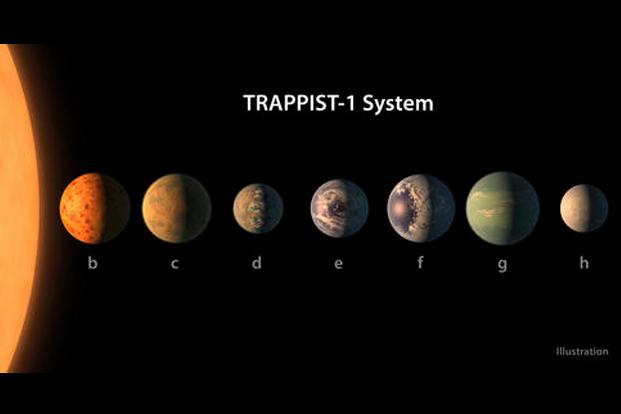In a first such feat, astronomers have found seven Earth-size planets orbiting a nearby star, and these new worlds may hold a life. According to NASA and the Belgian-led research team who announced the discovery on Wednesday, this cluster of planets is less than 40 light-years away in the constellation Aquarius.
The planets circle firmly around a dim dwarf star called Trappist-1, just about the size of Jupiter. Significantly, three are in the so-called habitable zone, where liquid water and, maybe life, might exist. The others are right on the entrance.
Scientists need to study the atmospheres to find out whether these rocky, terrestrial planets could have a life. But it already displays just how many Earth-size planets could be out there, particularly in a star’s sweet spot, ripe for extraterrestrial life.
“We’ve made a crucial step toward finding if there is life out there,” said the University of Cambridge’s Amaury Triaud, one of the researchers. The likelihood for additional Earth-size planets in our Milky Way galaxy is excellent.
“There are 200 billion stars in our galaxy,” said co-author Emmanuel Jehin of the University of Liege. “So do an account. You multiply this by 10, and you have the number of Earth-size planets in the galaxy _ which is a lot.”
Last year, the University of Liege’s Michael Gillon and his squad reported finding three planets around Trappist-1, and now the count is up to seven. Gillon said there could be more.
As per researchers, this compact solar system is reminiscent of Jupiter and its Galilean moons. Imagine – if Trappist-1 were our sun, all seven planets would be inside Mercury’s orbit that is the deepest planet of our own solar system.
“The spectacle would be beautiful because every now and then, you would see another planet, maybe about as big as twice the moon in the sky, depending on which planet you’re on and which planet you look at,” Triaud told reporters.
Gillon and his squad used both ground and space telescopes to detect and trail the planets.


















